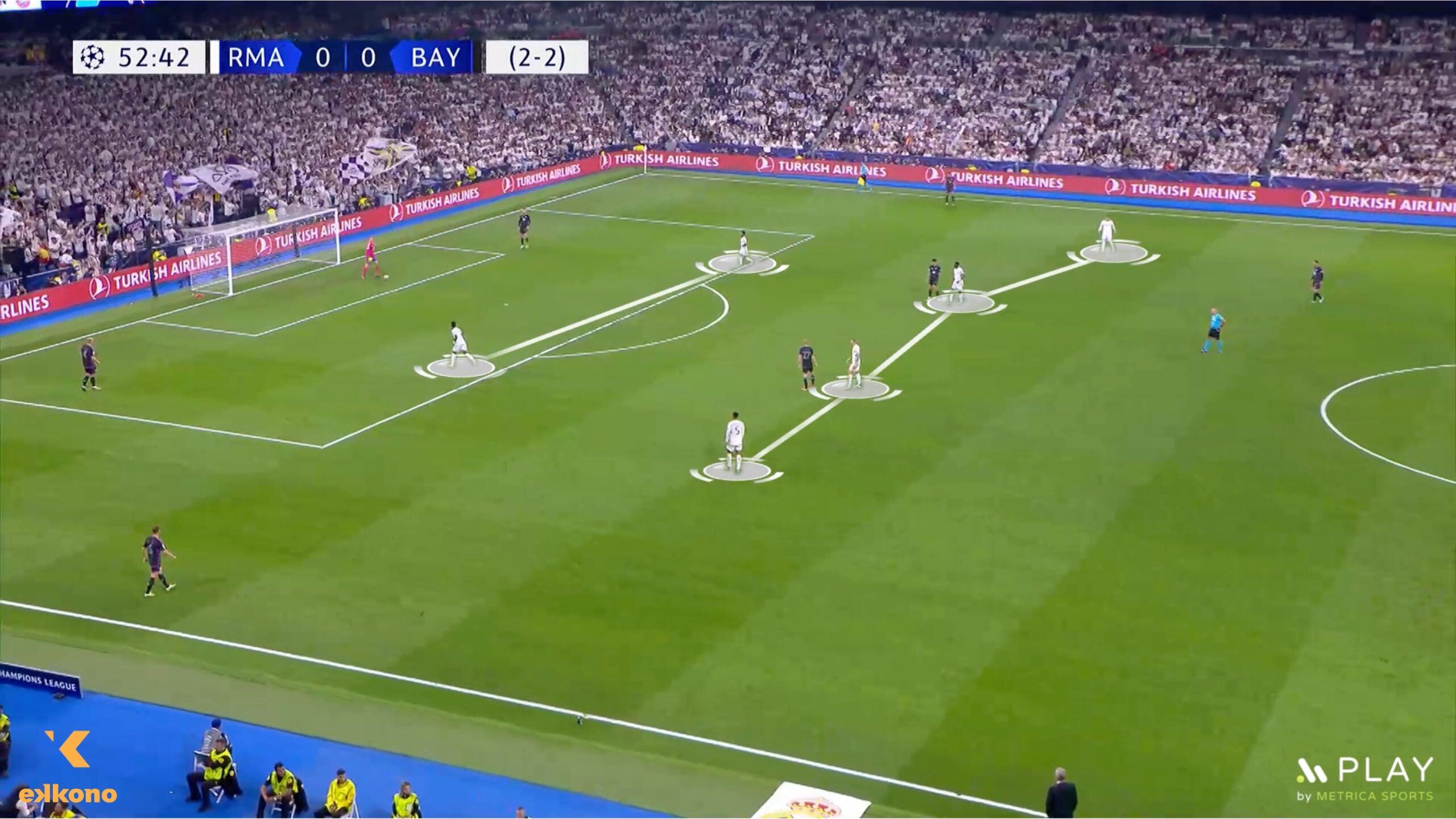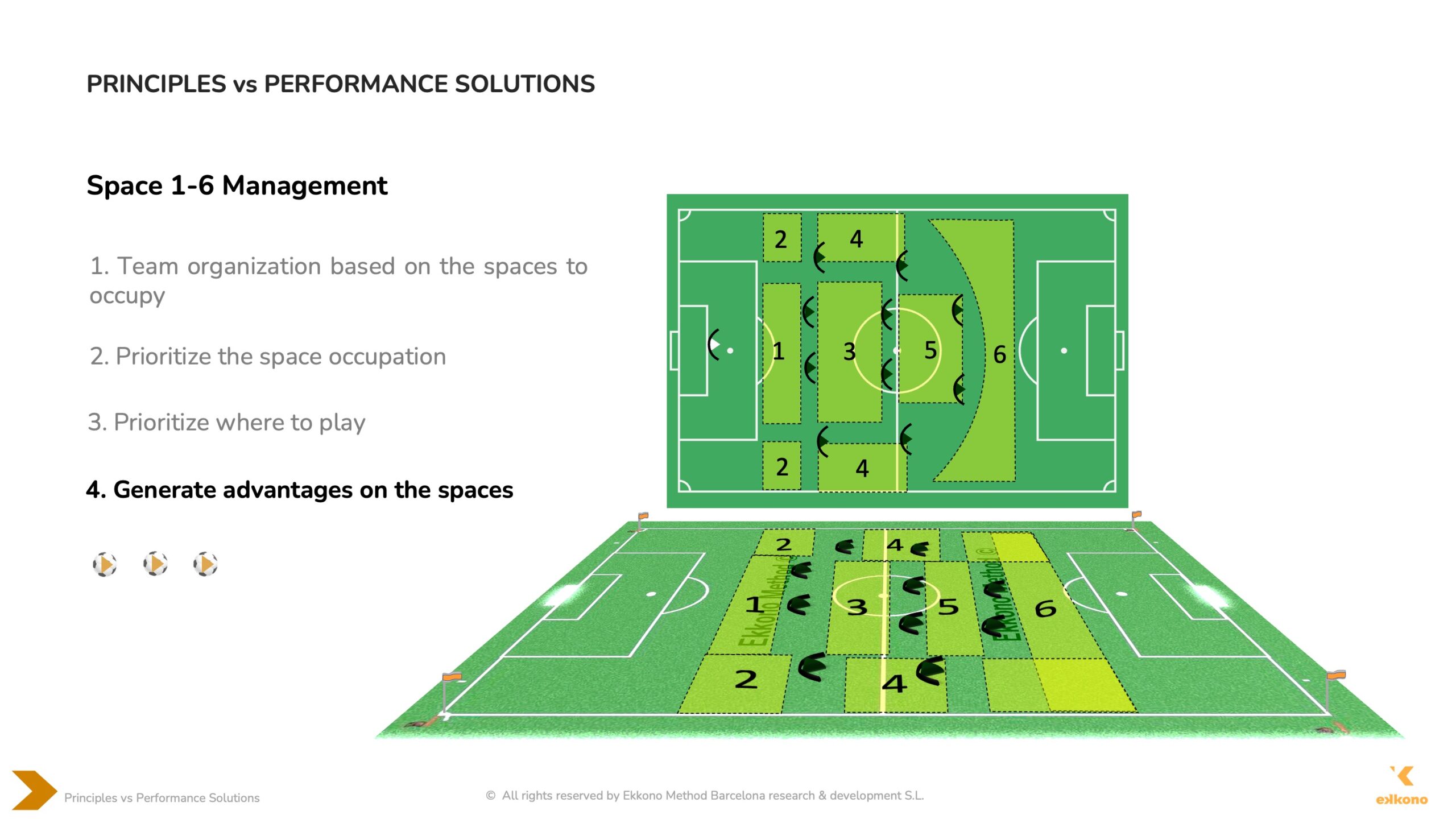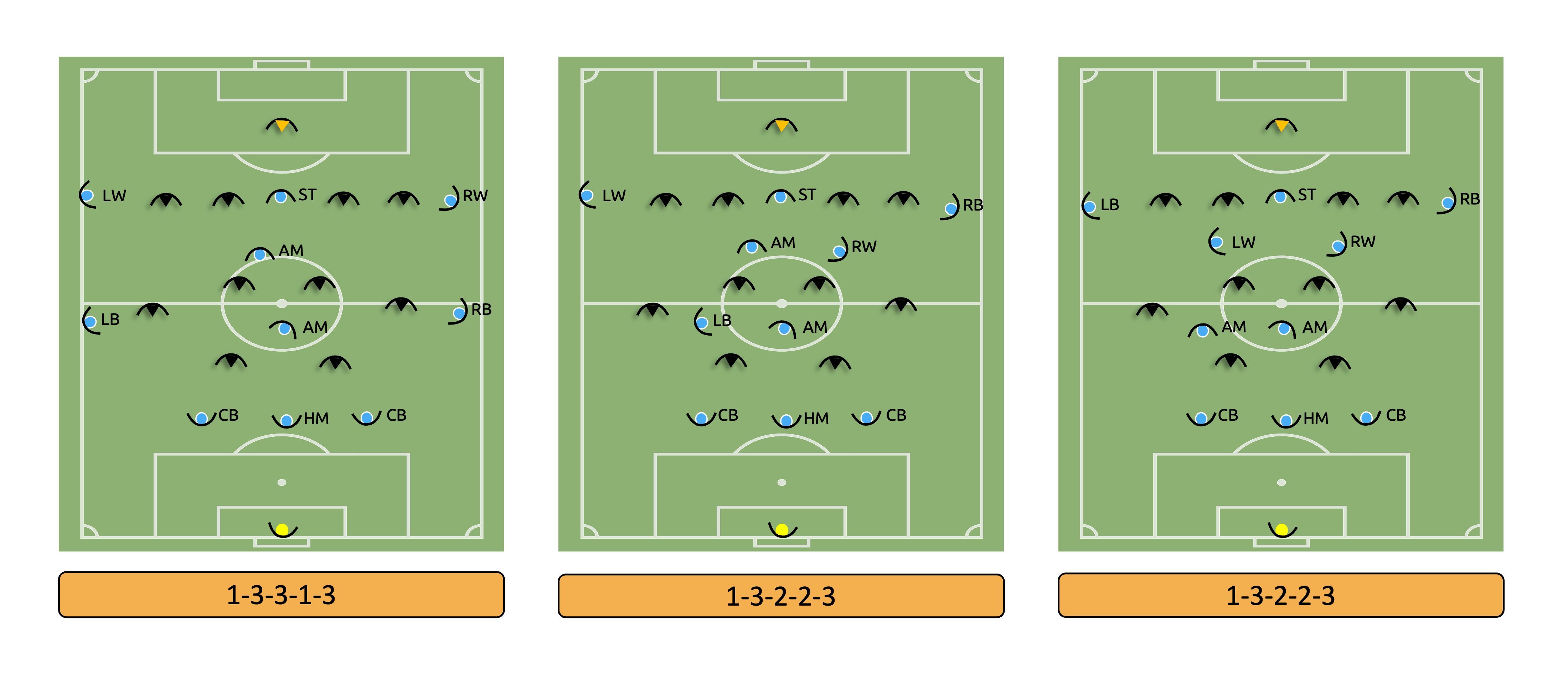
Introduction
Starting at the specialization stage (U14), coaches need to start introducing the idea of ‘system vs system’ to their teams. This idea is crucial for a good team performance against the different structures they may play. The concept, applicable in attack and defense, aims to identify or create advantages in the game based on the opposing structure. In this article, we will analyze different situations and explain potential solutions to solve them.
Build-Up against a Mid-Block
In the build-up, one of the team principles we need to ensure is to have numerical superiority. This scenario of course, will differ when we are facing a team defending in a mid-block, as possibly we cannot count on the goalkeeper to create this numerical superiority. So let’s focus on the latter.
Our team is playing a 4-3-3 system against a team defending in a 4-4-2 structure. Therefore, our center backs do not have any numerical advantage against their two strikers.

System vs System
In this action we can see Bayern Munich playing against 4-4-2 Real Madrid structure. In the goal kicks, they use the goalkeeper to create numerical superiority against the two strikers. When Real Madrid drops to a mid-block, this solution is no longer valid.
“THE SYSTEM VS SYSTEM IS CRUCIAL FOR GOOD TEAM PERFORMANCE AGAINST THE DIFFERENT STRUCTURES. THIS CONCEPT, APPLICABLE IN ATTACK AND DEFENSE, AIMS TO IDENTIFY OR CREATE ADVANTAGES IN THE GAME BASED ON THE OPPOSING STRUCTURE.”
Challenge: Ensure One Principle Without Losing Another One
We will analyze one of the most usual solutions in these cases, which is to drop the holding midfielder in between center backs. This solution, as any other used, will present challenges to solve as a team. Teams need to ensure each collective principle of their game model without losing other principles that are also important for the team. In this case, for instance, ensuring the numerical superiority in the first line should not affect other principles such as having different levels of depth or the occupation of space 5 (see figure below) following the proposal made by the Ekkono Method (see ‘Advanced Team Fundamentals I’ course for additional information).

Ekkono – Performance Solutions (1)
The Ekkono Method proposes to distribute the space management in the following way, considering the opposing structure. Spaces are sorted based on their priority.
‘System vs System’ Solutions
To solve the challenge mentioned above, we need to move other players to create an additional level of depth, and also occupy space 5. There are several options, which will depend on the characteristics of our players and the opposing team. Moving one advanced midfielder, moving and advanced midfielder and also a full-back, or moving both advanced midfielders to space 5. In this last case, we would then probably need to rebalance Space 3 with the striker, full-backs or wingers.
Moving these players means that they have a good command of the game model, and they also master the individual fundamentals needed to play in the new positions. That’s why it’s important to have the right profile of players who can adapt to the demands of the variant system.

BUILD UP STRUCTURES
There are different variants from a 4-3-3 build-up facing a 4-4-2. Dropping the holding midfielder into center-backs opens different alternatives on how to occupy the spaces.
Conclusion
As we have seen in this article, ‘system vs system’ is a very important concept to maximize your team’s performance. In this article, we’ve seen an example in a build-up scenario, but this concept is applicable to other attacking scenarios or also in defense when it comes to our defensive block structure or high-pressing structure based on the opponent’s attacking system.
If you would like to learn more about ‘system vs system’, and help your team master all the possible scenarios you can join our ‘Advanced Team Fundamentals II’ course.
In this course, we analyze in detail the scenarios for all the systems against the most common structures in modern football.

